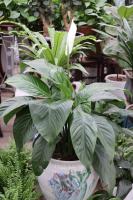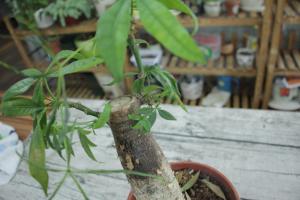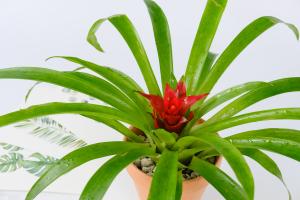Introduction
Water plants are a popular choice for both indoor and outdoor gardeners. However, not all water plants are created equal, and their light requirements can vary. Light is one of the most important factors for water plants to grow, but just how much light do they need? In this article, we will explore the different light requirements of water plants and provide some helpful tips for growing them successfully.
Low Light Water Plants
Some water plants can thrive in low light conditions. These plants are ideal for indoor gardeners who may not have access to natural sunlight or for pond owners who have shaded areas in their water gardens. Some examples of low light water plants include water ferns, Anubias, and Java moss.
Low light water plants typically require only 0.5-1 watt of LED light per gallon of water. T5 fluorescent bulbs are also a great option for providing low to medium light levels. These types of lights should be left on for 8-10 hours per day. Be careful not to overexpose these plants to light, as too much light can cause algae growth and damage the plant's leaves.
Medium Light Water Plants
Many popular water plants fall into the medium light category. These plants require more light to grow than low light plants but less than high light plants. Some examples of medium light water plants include water lilies, lotuses, and hornworts.
Medium light water plants require 1-2 watts of LED light per gallon of water. For these plants, T5 fluorescent bulbs or LED lights can be used, and should be left on for 10-12 hours per day. These plants should not be exposed to direct sunlight for long periods of time, as this can cause damage to the leaves and flowers.
High Light Water Plants
High light water plants are for advanced aquatic gardeners who have the tools and knowledge to provide the required lighting conditions. These plants are ideal for ponds or aquariums that receive direct sunlight or for indoor gardens with high-end lighting systems. Some examples of high light water plants include red tiger lotuses, water sprite, and dwarf baby tears.
High light water plants require 2-3 watts of LED light per gallon of water. Metal halide bulbs or LED lights with high intensity should be used to provide the necessary light levels. For these plants, lights should be left on for 12-14 hours per day to ensure proper growth. However, be cautious not to overexpose the plants to light, as this can cause damage to the leaves and roots.
Tips for Growing Water Plants with Adequate Light
It is important to provide water plants with the appropriate lighting conditions. Here are a few tips for growing water plants with adequate light:
Choose the right plants for your lighting conditions.
Use appropriate lighting systems based on the plants' light requirements.
Ensure consistent lighting by timing your lights appropriately.
Avoid exposing plants to direct sunlight for long periods of time.
Monitor your plants for signs of overexposure to light, such as yellowing or burnt leaves.
Conclusion
Water plants require adequate lighting conditions to grow and thrive. The light requirements for water plants vary, depending on the plant's species and light preferences. To ensure proper growth, it is important to choose the right plants for your lighting conditions and provide them with proper lighting systems. With the right conditions, your water plants can flourish and provide a beautiful addition to your aquatic garden.

 how many times do yo...
how many times do yo... how many planted tre...
how many planted tre... how many pine trees ...
how many pine trees ... how many pecan trees...
how many pecan trees... how many plants comp...
how many plants comp... how many plants can ...
how many plants can ... how many plants and ...
how many plants and ... how many pepper plan...
how many pepper plan...




























